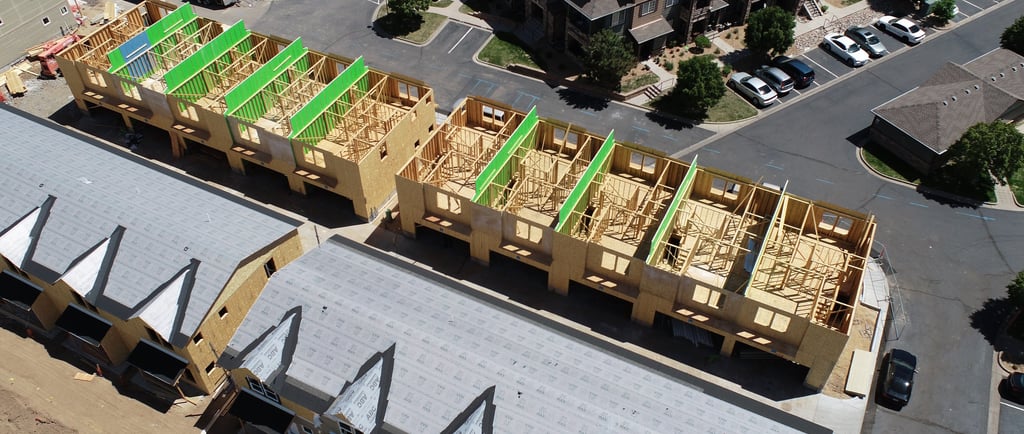Maximizing Efficiency Part 3: Harnessing the Power of Drones for Efficient Materials Management in Construction
Mike Curta
12/19/20244 min read


Understanding Drones in Construction
Drones, also known as Unmanned Aerial Vehicles (UAVs), have emerged as a transformative technology within the construction industry. These devices, equipped with advanced sensors and imaging capabilities, play a significant role in various aspects of construction, particularly in enhancing materials management. The technology behind drones is continually evolving, featuring high-resolution cameras, LiDAR systems, and thermal sensors, all of which contribute to their effectiveness in data collection and aerial surveillance.
There are several types of drones utilized in construction, each tailored for specific tasks. Fixed-wing drones are often used for covering large areas, ideal for surveying and mapping tasks due to their long flight times. Conversely, multi-rotor drones offer more versatility, being capable of vertical takeoff and landing, making them suitable for inspecting buildings and other structures. Each type serves unique functions, contributing to the efficiency of construction projects.
The role of drones in materials management has gained traction, as they provide real-time data on material inventory, site progress, and site conditions. Aerial surveys from drones allow construction managers to monitor material usage and delivery accurately. By integrating drone technology, professionals can reduce waste and avoid supply chain discrepancies, leading to a more streamlined construction process.
The acceptance of drone technology among construction professionals is steadily growing, as many recognize the benefits associated with enhanced data collection and decision-making capabilities. Organizations have begun implementing drone-based solutions for their projects, resulting in improved accuracy and operational efficiency. This trend indicates a broader acceptance in the construction sector, signaling a shift towards modernizing traditional project management practices.
Streamlining Material Tracking and Inventory Management
In the construction industry, the effective management of materials is paramount for ensuring project efficiency and cost-effectiveness. Drones, equipped with advanced GPS technology and high-resolution cameras, have emerged as invaluable tools to streamline material tracking and inventory management on construction sites. Utilizing drone technology enables project managers to monitor materials in real time, capturing every detail from aerial views that are otherwise difficult to obtain. This capability drastically enhances the accuracy of inventory counts and tracking, providing stakeholders with reliable data on material usage and storage.
One of the principal advantages of using drones for material tracking is the significant time savings they offer. Traditional methods of tracking materials often involve manual counts and physical inspections, which can be labor-intensive and fraught with human error. In contrast, drones can cover large areas quickly and deliver immediate results, ensuring that project teams have timely access to accurate information. This accelerates decision-making processes and allows for more efficient allocation of resources on-site.
Moreover, drones can assist in inventory management by providing comprehensive data analysis. By generating visual content and integrating it with inventory management software, drones facilitate a more organized approach to tracking materials. This integration not only reduces labor costs associated with traditional tracking methods but also enhances the overall accuracy of material monitoring. The ability to perform automated scans of material storage locations ensures that discrepancies are identified and corrected promptly, reducing the risks of delays caused by misplaced or inaccurately accounted materials.
The adoption of drone technology in construction is paving the way for a more streamlined approach to material tracking and inventory management, setting new standards for efficiency and accuracy within the industry.
Enhancing Site Safety and Reducing Waste
The integration of drones into construction sites has catalyzed a significant transformation in safety protocols and materials management. Drones serve as vigilant eyes in the sky, enabling project managers and site supervisors to identify potential hazards from an elevated viewpoint. This aerial perspective allows for the detection of structural irregularities or unsafe work practices that might otherwise go unnoticed, ultimately enhancing site safety. Moreover, drones equipped with advanced sensors can monitor the landscape for any material spills or equipment malfunctions, contributing to a safer environment for workers.
Effective materials management is crucial in the construction industry, and drones play an instrumental role in this aspect as well. By conducting regular aerial surveys, drones can assist in tracking inventory levels and identifying discrepancies in material usage. This capability minimizes the likelihood of over-ordering or misplacing materials, thereby reducing unnecessary expenditure and waste. The real-time data collected by drones allows for precise planning and streamlined logistics, which are essential for any construction project's efficiency.
Another noteworthy advantage of employing drones is the positive impact they have on environmental sustainability. Through efficient materials management, drones help reduce waste generated from construction activities. This reduction not only conserves resources but also lessens the environmental footprint of construction projects. By optimizing material usage and minimizing excess, construction companies can adopt more sustainable practices that align with current environmental standards.
Incorporating drones into construction site management not only provides enhanced safety measures but also fosters responsible materials management. The benefits of utilizing this technology extend beyond immediate safety improvements; they contribute to a long-term vision of sustainability within the industry, advocating for a balance between effective construction practices and environmental conservation.
Case Studies and Future Trends in Drone Technology for Materials Management
The integration of drone technology into construction materials management has yielded significant results across various case studies. For instance, a recent project involving the construction of a large commercial building utilized drones to conduct aerial surveys and monitor material stockpiles. By employing drones equipped with high-resolution cameras, project managers could track material consumption in real time, ensuring that supplies were adequate throughout the project lifecycle. This approach not only improved efficiency but also reduced delays associated with material shortages. The findings demonstrated that efficiency gains approached 30%, highlighting the effectiveness of drone deployment in project execution.
Another notable example comes from the construction of a new highway, where drones facilitated site inspections and inventory checks. Using drone imagery, supervisors could identify and rectify issues concerning material placement quickly. This capability led to a dramatic reduction in manual inspections, decreasing labor hours and costs by approximately 20%. The case revealed that timely data acquisition and actionable insights provided by drones significantly enhanced decision-making processes, minimizing the time spent on identifying material discrepancies.
Looking to the future, trends indicate that advancements in artificial intelligence (AI) and automation will further refine the role of drones in materials management. Developing technology allows drones to not only gather data but also analyze it in real-time, enabling predictive analytics. These innovations promise to minimize material wastage by forecasting material needs based on project timelines and consumption patterns. Moreover, the implementation of automated drones could lead to increased safety for construction site foremen, as these drones can carry out inspections in hazardous areas without putting personnel at risk.
In conclusion, as demonstrated by the various case studies and the expected evolution of drone technology, the future of materials management in construction is likely to be transformed. These advancements hold the potential to enhance project efficiency, reduce costs, and increase safety, reaffirming the significant role that drone technology will play in the construction industry moving forward.
Innovative
Aerial solutions for construction and real estate.
RMUAVs
Quality
contact@rockymountainuavs.com
(303) 903-4809
© 2024. All rights reserved.
